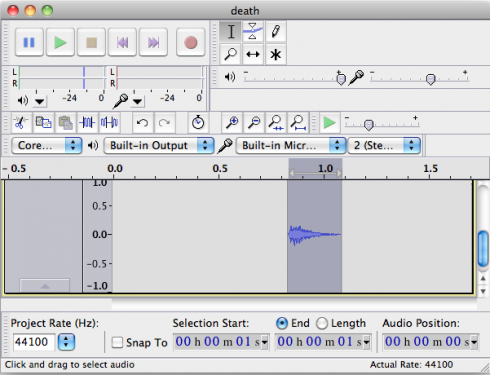A quick and simple experiment that demonstrates endothermic reaction and can include a discussion of ionic and covalent bonds. Mixing baking soda and vinegar together drops the temperature of the liquid by about 4 °C in one minute. (Note that while the temperature drops and the reaction looks endothermic, it’s actually not — other things cause the cooling. However, since it looks like an endothermic reaction I use it as a first approximation of one.)
Ingredients
- 3 g baking soda – (sodium bicarbonate – NaHCO3)
- 60 ml vinegar – (acetic acid – CH3COOH)
- 200 ml styrofoam cup (needs to be big enough to contain the bubbles).
- thermometer
Procedure
Add the baking soda to the vinegar in the styrofoam cup. Measure the temperature while stirring for about a minute.
Results
| Time (t) |
Temperature (°C) |
| 0 |
25 |
| 15 |
24 |
| 30 |
21 |
| 60 |
21 |
Discussion
The chemical reaction between baking soda (sodium bicarbonate) and vinegar (acetic acid) can be written:
NaHCO3 + CH3COOH —-> CO2 + H2O + CH3OONa
The products of the reaction are carbon dioxide gas (which gives the bubbles), water, and sodium acetate.
However, a more detailed look shows that for the reaction to work the two chemicals need to be dissolved in water. Dissolving these ionic compounds causes the two ions to separate. Dissolved baking soda dissociates into a sodium and a bicarbonate ion:
sodium bicarbonate —-> sodium ion + bicarbonate ion
NaHCO3 —-> Na+ + HCO3–
Why doesn’t the bicarbonate break into smaller pieces? Because it’s atoms are bonded together more tightly by covalent bonds.
Similarly, the acetic acid in vinegar dissociates into:
acetic acid —-> hydrogen ion + acetate
CH3COOH —-> H+ + CH3COO–
This video has a nice overview of ionic versus covalent bonding.
References
More detail about the reaction can be found at:
![]()
![]()
![]()
![]()



